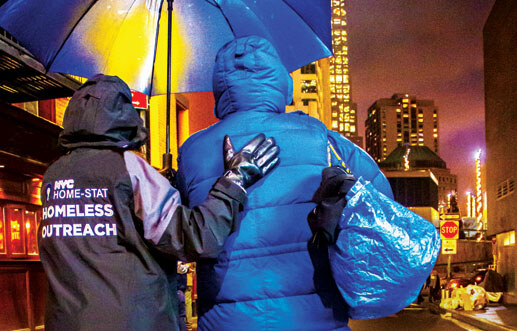What We Know So Far About Homelessness Funding in 2024
From emergency shelters to employment resources, homelessness funding contributes to countless programs and services across the country. Many of these programs aim to improve our general response to homelessness by eliminating the stigma and identifying its root problems.
Unfortunately, not all of these federal services received their requested funding for the 2024 fiscal year. This limits the assistance that’s available to certain vulnerable groups, especially amid new anti-homelessness laws. Professionals must be aware of the current trends and shifts in 2024 homelessness funding to effectively assist unhoused individuals.
Where Is Homelessness Funding Heading in 2024?
The 2024 fiscal year budget increased funding for many homelessness programs, including new and old Homeless Assistance Grants. This was the culmination of bipartisan efforts that aimed to address the current homelessness crisis. Unfortunately, delays in the 2024 fiscal-year budget also led to certain departments and programs being underfunded, which may limit available resources.
Increased Federal Allocations
In March 2024, President Joe Biden signed an allocations bill that provided additional funding to specific federal agencies through the fiscal year. This bill contributed a $418 million increase toward Homeless Assistance Grants and $45 million for families, veterans, and others at risk.
The impacted agencies included:
- The Department of Housing and Urban Development (HUD)
- The U.S. Interagency Council on Homelessness (USICH)
- The Department of Veterans Affairs (V.A.)
Another $5.5 billion in grants was announced in early May, including funding for homeless shelters, affordable housing, and stronger communities. These grants will directly and indirectly combat the homelessness crisis by targeting its systemic roots.
Targeted Support for Vulnerable Groups
Substantial research has helped us gauge which individuals and groups are most at risk of homelessness. Learning more about the current state of homelessness helps eliminate stigmas and misconceptions so that funds can adequately address the issue. Many federal agencies now specifically target veterans, children moving out of foster care, victims of domestic violence, and other vulnerable groups.
U.S. veterans face one of the highest risks of living without stable housing. This is due to inconsistent V.A. funding, a lack of familial support, mental health concerns, and many other factors. While efforts have been made to address veteran homelessness, the data continuously shows that most veterans simply aren’t getting the help they need — particularly from the Department of Veterans Affairs.
The 2024 appropriations bill allocated $172 billion in mandatory funding and $135 billion in discretionary funding for the V.A. and other relevant agencies, and $121 billion of this funding will go directly to V.A. medical care — a $2.3 billion increase from 2023. The bill also expanded funding for disability benefits, V.A. infrastructure, and medical research.
On paper, these funds will help the V.A. give veterans the care they’re owed. However, this may not be enough to resolve the issues at their root: The V.A.’s 2025 budget submission requests an increase of $63 million in mandatory funding from what was granted in the 2024 bill.
Bipartisan Support and Legislative Outcomes
Much of the progress toward better homelessness funding has been pushed by bipartisan efforts. The 2024 appropriations bill passed with a staggering margin of 72 to 24 votes in the Senate and 286 to 134 in the House of Representatives. To compare, the 2022 and 2023 allocations bills passed with only 249 and 225 House votes, respectively.
HUD’s Homeless Assistance Grants received more than a $400 million increase under the 2024 bill. This 11.5% boost, which was one of the largest one-year increases since 1999, will benefit the following grants and programs:
- Continuum of Care (CoC)
- Emergency Solutions Grants (ESG)
- Youth Homelessness Demonstration Program (YHDP)
- National Homeless Data Analyst Project
- Homeless Management Information System (HMIS)
Impact on Rental Assistance Programs
The 2024 fiscal-year budget also expanded funding for various HUD rental assistance programs. This includes $45 million for new incremental housing choice vouchers for veterans, families, and youth. Meanwhile, many existing vouchers have been increased to account for heightened rental costs.
This additional funding gives thousands of Americans much-needed access to stable housing. For instance, consider a family who moved into their apartment in 2022 using a rental assistance voucher. With their rent now higher, and likely rising again by the end of the year — and salary increases not accounting for inflation — the 2022 voucher may no longer be sufficient. The 2024 budget aims to amend this issue so that families don’t have to risk losing their homes.
Despite these benefits, the increased federal allocations do little to address the need for affordable permanent housing, especially as rent levels continue to surge. The current system relies on the hope that an increased HUD budget will be approved each year. Though this funding does address one of the core roots of homelessness, more supportive services will likely be needed to permanently address the issue.
Underfunded Departments With Homeless Services
While bipartisan efforts contributed to better homelessness funding for the 2024 fiscal year, this didn’t happen overnight. Final approvals and signatures for the bill did not occur until just before its deadline. This resulted in certain departments waiting for funding longer than usual — including those with homelessness funds and programs.
Additionally, due to spending caps and their lower priority, these departments received smaller budgets than they requested. This may limit the available homelessness prevention funds for particular programs throughout 2024.
Health and Human Services
The Department of Health and Human Services (DHHS) requested $1.74 trillion in mandatory funds and $144 billion in discretionary funds. However, only $1.7 trillion and $134 billion were approved — a total difference of more than $46 billion.
The DHHS comprises different agencies and programs, including the Food and Drug Administration (FDA), the Centers for Disease Control and Prevention (CDC), and Medicaid. Each program may accommodate this budget shortage differently.
The DHHS’s current homelessness programs include:
- Substance Use and Mental Health Services (SAMHSA)
- Projects for Assistance in Transition From Homelessness (PATH)
- Runaway and Homeless Youth Program (RHY)
- Family Violence Prevention Services
- John H. Chafee Foster Care Program
Education
The Department of Education’s 2024 budget request included more than $129 million for its Education for Homeless Children and Youths program. The program offers formula state-level grants to local educational agencies (LEAs) that help unhoused children enroll in and attend school. Covered services include:
- Preschool programs
- Before- and after-school programs
- Transportation
- Health care referrals
- Enriched supplemental instruction
Unfortunately, the final 2024 allocations bill provided insufficient funds to the Department of Education based on what it requested. That said, the requested budget for the Education for Homeless Children and Youths program was practically identical to the 2023 budget, so the program will hopefully continue to operate as effectively in 2024 as in years past.
Labor
The Department of Labor (DOL) initially requested $15.1 billion in discretionary funds for 2024. Unfortunately, the final allocations bill granted only $13.8 billion — the same amount as in 2023. The DOL will request a smaller increase in 2025 to account for new programs that did not receive any funding in 2024.
In theory, nearly every DOL program indirectly helps ease the homelessness crisis by making jobs safer, more accessible, and less discriminatory. The department’s 2024 budget also included the following homelessness programs:
- Homeless Veterans’ Reintegration Program (HVRP): Part of the Veterans’ Employment and Training Service (VETS), this program helps unhoused veterans obtain the necessary skills and resources to get hired. It includes subsets for homeless female veterans, incarcerated veterans, veterans with children, and more.
- Equitable Transition Model (ETM): This program develops strategies to help younger individuals who are at risk of homelessness transition into jobs. This includes teens who have experienced homelessness, moved out of foster care, or been involved in the justice system.
Implications for Homelessness Services
Anti-homeless legislation remains among the greatest challenges that unhoused individuals face in 2024. Rather than addressing the actual issues, most laws against homelessness further contribute to recidivism, incarceration, and ongoing stigmas. These new laws increase the need for emergency funds for homeless families and individuals, as simply existing without a house could result in serious legal issues.
Fortunately, unhoused families don’t have to rely solely on federal agencies for help. Nonprofit providers, emergency shelters, and other independent services further expand the resources that are available to those who need them, regardless of what is federally approved. For example, the National Homelessness Law Center (NHLC) offers training, education, and other support options to prevent homelessness over the long term. This level of advocacy is crucial for breaking stigmas and developing better anti-homelessness solutions.



